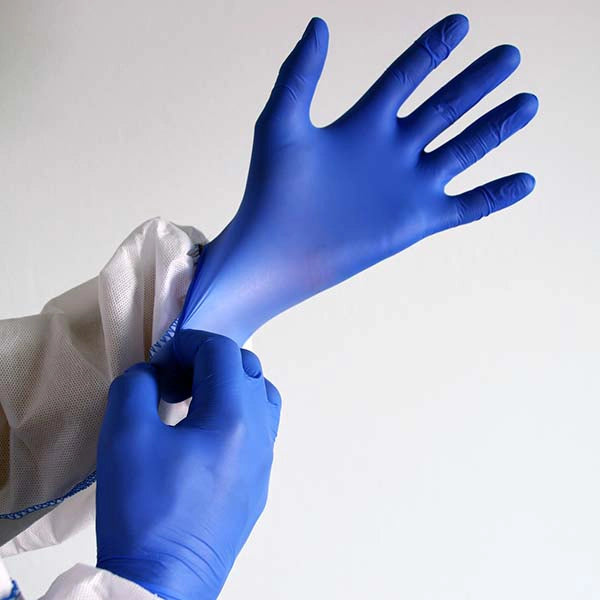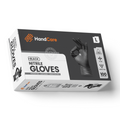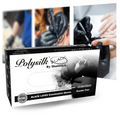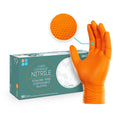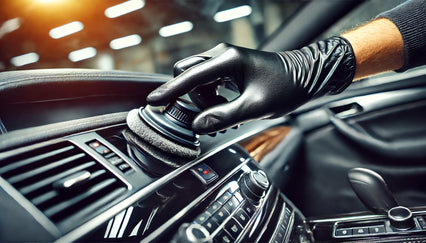When starting your beekeeping journey, one of the most important decisions is choosing the right gloves to protect your hands from stings while allowing you to handle your bees and equipment effectively.
With various materials and styles available, it can be challenging to determine which gloves best suit your needs as a beekeeper.
In this article, we'll explore the top options for beekeeping gloves, helping you make an informed decision to ensure a safe and enjoyable beekeeping experience.
What Are the Best Gloves for Beekeeping?
The best gloves for beekeeping strike a balance between protection against stings and maintaining the dexterity needed to handle bees and equipment with precision.
When selecting gloves, consider factors such as material, fit, and cuff length to find the perfect pair for your beekeeping needs.
Nitrile Gloves
Nitrile gloves have gained popularity among beekeepers due to their puncture resistance and snug fit. Made from synthetic rubber, nitrile gloves provide a barrier against stings while allowing for better dexterity compared to thicker materials.
Latex Gloves
Latex gloves offer excellent flexibility and sensitivity, allowing beekeepers to maintain a high level of dexterity while working with their hives. The thin, elastic material enables beekeepers to feel the texture and temperature of the hive components, providing valuable feedback during inspections.
However, latex gloves may not provide the same level of puncture resistance as nitrile or leather gloves, and some individuals may experience allergic reactions to latex, making it essential to consider personal sensitivities when choosing this option.
Benefits of Using the Right Beekeeping Gloves
The right beekeeping gloves offer several advantages that make your beekeeping experience safer, more comfortable, and more efficient.
Protection from Stings
Quality beekeeping gloves prevent painful stings, allowing you to handle bees with greater confidence. Stings can be distracting and may cause you to drop frames or tools, potentially harming your bees.
With the proper gloves, you can focus on your tasks without worrying about the consequences of an unexpected sting.
Improved Dexterity
Gloves designed for beekeeping provide the right balance of protection and flexibility, enabling you to manipulate frames and tools with ease. Nitrile gloves are an excellent choice for beekeepers who value dexterity, as they offer a snug fit and allow for precise movements.
This increased dexterity helps you work more efficiently and reduces the risk of accidentally crushing bees or damaging hive components.
Increased Comfort
Comfortable, well-fitting gloves reduce fatigue during long beekeeping sessions. When your hands are comfortable, you can work for extended periods without experiencing discomfort or irritation. Look for gloves with breathable materials or ventilation to prevent excessive sweating, which can lead to slippage and discomfort.
Choosing the right size glove is also important for ensuring a comfortable fit that doesn't restrict movement or cause chafing.
How to Choose the Best Nitrile Gloves for Beekeeping
When selecting nitrile gloves for beekeeping, look for options with high puncture resistance ratings. Gloves designed to withstand punctures offer better protection against bee stings, keeping your hands safe while working with your hives.
Opt for a snug fit when choosing your nitrile gloves. Well-fitting gloves allow you to maintain dexterity, which is essential for handling delicate hive components and tools. A close fit also prevents bees from crawling inside your gloves, reducing the risk of stings.
Consider the cuff length when making your selection. Nitrile gloves with longer cuffs provide additional protection for your wrists and forearms, areas that can be vulnerable to stings. Look for gloves that extend well past your wrist to ensure optimal coverage.
Thickness is another factor to keep in mind. While thicker nitrile gloves offer more protection, they may reduce your ability to feel and manipulate objects. Gloves ranging from 4 to 6 mil in thickness strike a good balance between protection and dexterity for most beekeeping tasks.
Lastly, consider the texture of the gloves. Some nitrile gloves feature textured fingertips or palms, providing enhanced grip and reducing the likelihood of dropping frames or tools. This added traction can be particularly useful when working with wet or slippery surfaces in your hive.
How to Measure for Beekeeping Gloves
To measure for beekeeping gloves, begin by measuring the circumference of your hand just below the knuckles, excluding your thumb. This measurement will help determine your glove size, ensuring a snug fit that maximizes dexterity without excess material.
Next, measure from the base of your palm to the tip of your middle finger to gauge the glove length you need. For additional wrist and forearm protection, consider gloves with longer cuffs.
Properly fitted gloves enhance both comfort and control, allowing you to handle delicate hive components with precision while minimizing the risk of stings.
Tips for Maintaining Dexterity While Wearing Beekeeping Gloves
Thin, flexible materials like nitrile allow you to maintain a high level of dexterity while still protecting your hands from stings. Nitrile gloves offer a snug fit that enables precise movements and control, making it easier to handle delicate hive components and tools.
When selecting your beekeeping gloves, ensure they fit snugly to your hands. A proper fit reduces the risk of accidentally crushing bees or damaging hive parts due to excess material or loose-fitting gloves. Well-fitting gloves also prevent bees from crawling inside, minimizing the chances of getting stung on your wrists or forearms.
Textured fingertips or palms on nitrile gloves provide enhanced grip, reducing the likelihood of dropping frames or tools, especially when working with wet or slippery surfaces in the hive. This added traction helps you maintain control and precision, even in challenging conditions.
Remember, finding the right balance between protection and dexterity may require some trial and error. Experiment with different glove materials, thicknesses, and fits to discover what works best for your beekeeping style and comfort preferences. With practice and the right gloves, you can enjoy a safe and productive beekeeping experience while minimizing the impact on your bees.
What Are the Most Sting-Resistant Beekeeping Gloves?
When it comes to sting resistance, nitrile gloves with a high puncture resistance rating are your best bet. These gloves provide a strong barrier against bee stingers, keeping your hands safe during hive inspections and maintenance tasks. Look for nitrile gloves specifically designed to withstand punctures, as they offer superior protection compared to standard nitrile gloves.
Latex gloves, while known for their flexibility and comfort, may not provide the same level of puncture resistance as nitrile or leather gloves. While they allow for excellent dexterity, latex gloves are more susceptible to stinger penetration, particularly if you encounter an aggressive colony.
Additionally, some individuals may experience allergic reactions to latex, so it's important to consider your personal sensitivities when deciding on the best gloves for your beekeeping needs.
Final Thoughts and Verdict
Ultimately, the most sting-resistant beekeeping gloves will depend on your individual preferences and the level of protection you require.
- Nitrile gloves with a high puncture resistance rating offer the best combination of sting protection and dexterity, making them a popular choice among beekeepers. If you prioritize maximum sting resistance and don't mind a slight reduction in dexterity, goatskin leather gloves are a reliable option.
- Latex gloves, while comfortable and flexible, may not provide the same level of protection against stings as the other two options.
gloves.com offers a wide selection of beekeeping gloves, ensuring you find the perfect balance between protection and dexterity for your needs. With options like high puncture resistance nitrile gloves and durable goatskin leather gloves, you can confidently handle your hives with minimal risk.
Visit gloves.com to explore their range and choose the best gloves for your beekeeping journey.
Best Gloves For Beekeeping: Frequently Asked Questions
Do beekeeping gloves prevent stings?
Beekeeping gloves offer protection against stings by providing a barrier between your hands and the bees, especially when made from thicker or puncture-resistant materials like nitrile or leather.
How should beekeeping gloves fit?
Beekeeping gloves should fit snugly to prevent bees from crawling inside and to allow for maximum dexterity, which is essential for handling hive components and avoiding accidental stings.
What gloves can bees not sting through?
Gloves made from high puncture-resistant materials, such as nitrile or goatskin leather, are more effective at preventing bee stings compared to thinner gloves like latex, as they provide a stronger barrier against stingers.

